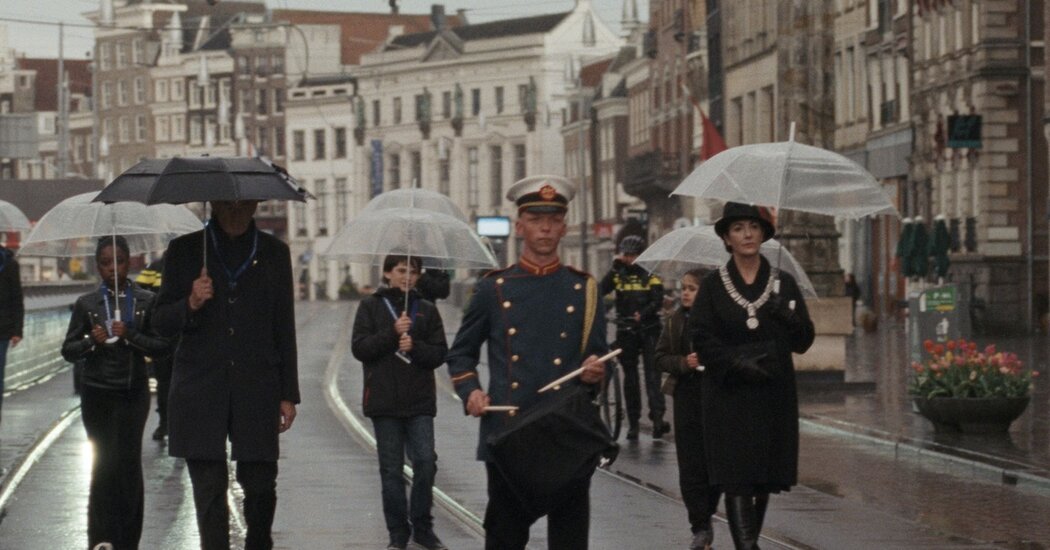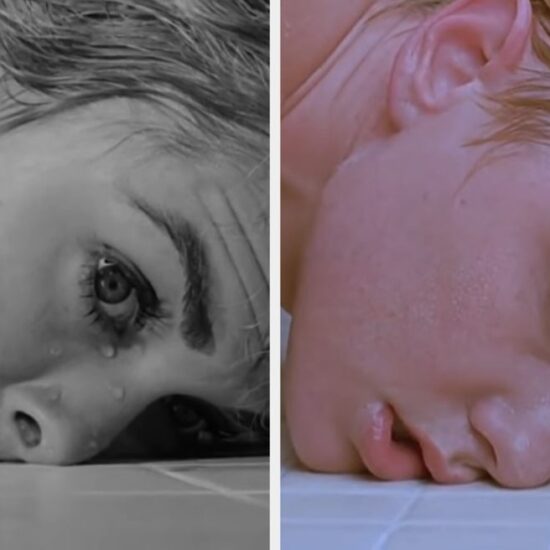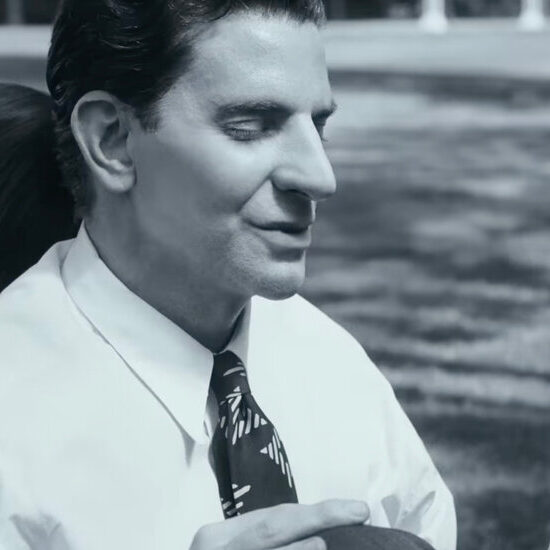
Early in Steve McQueen’s extraordinary documentary “Occupied City,” the film cuts to the interior of the elegant main hall in Amsterdam’s grand Royal Concertgebouw. In World War II, the Nazi-German occupiers held events in the hall, but at some point in 1942 the names of the Jewish composers adorning it were covered. Concerts continued, but without Jewish composers, conductors, orchestra musicians, concertgoers and even names on walls.
Not long after this section ends, “Occupied City” shifts to a new location, a nondescript, boarded-up storefront. This, the narrator explains, was the site of a cafe that, in 1940, was among the first in the city to ban Jews. Soon after, the movie cuts to another location and then to another and another. And so it goes in this intense, absorbing and epically scaled chronicle — it runs close to four and a half hours, including a 15-minute intermission — that charts the fate of Amsterdam’s Jews during the Nazi occupation, street by street, address by address.
In total, the film surveys a staggering 130 addresses, a mapping that McQueen has realized, somewhat surprisingly, without the use of archival imagery. Instead, the director (whose earlier films include “12 Years a Slave”) explores the city’s past exclusively through images of quotidian Amsterdam life today — in and outside homes, in squares, on trams — that he shot over several years beginning in 2019. These 35-millimeter visuals are, in turn, accompanied by sounds that include voices, birdsong and so on recorded during the filming; fragments of music (some composed by Oliver Coates); and the narration (delivered in the English-language version with dry equanimity by Melanie Hyams, a British voice actor).
McQueen’s decision to only use images of contemporary Amsterdam in the film is as effective as it is conceptually bold, though it takes time to fully grasp what he’s doing and why. Without ceremony, textual explanation or a flourish of introductory music, he drops you into the city’s gentle and clamorous bustle right from the get go, and there you remain even as the film hopscotches across Amsterdam, covering miles and years. The movie opens, for instance, with a daytime shot of a warmly lit hallway in what looks like an apartment, with a door opened onto a garden. It’s quiet save for the homey sounds of rustling, the metallic tinkling of what seems like silverware and some faintly babbling voices, perhaps from a radio or TV.













